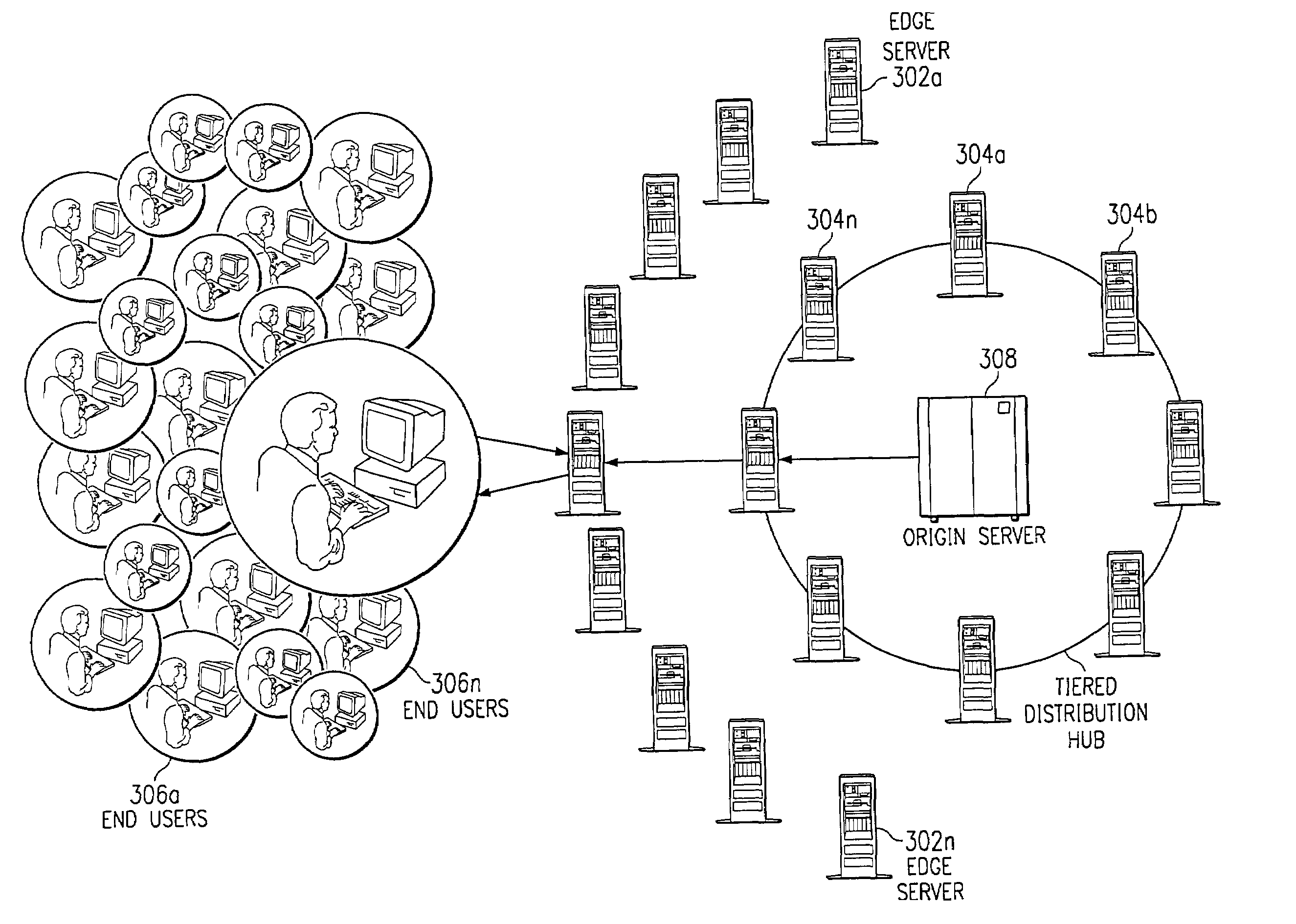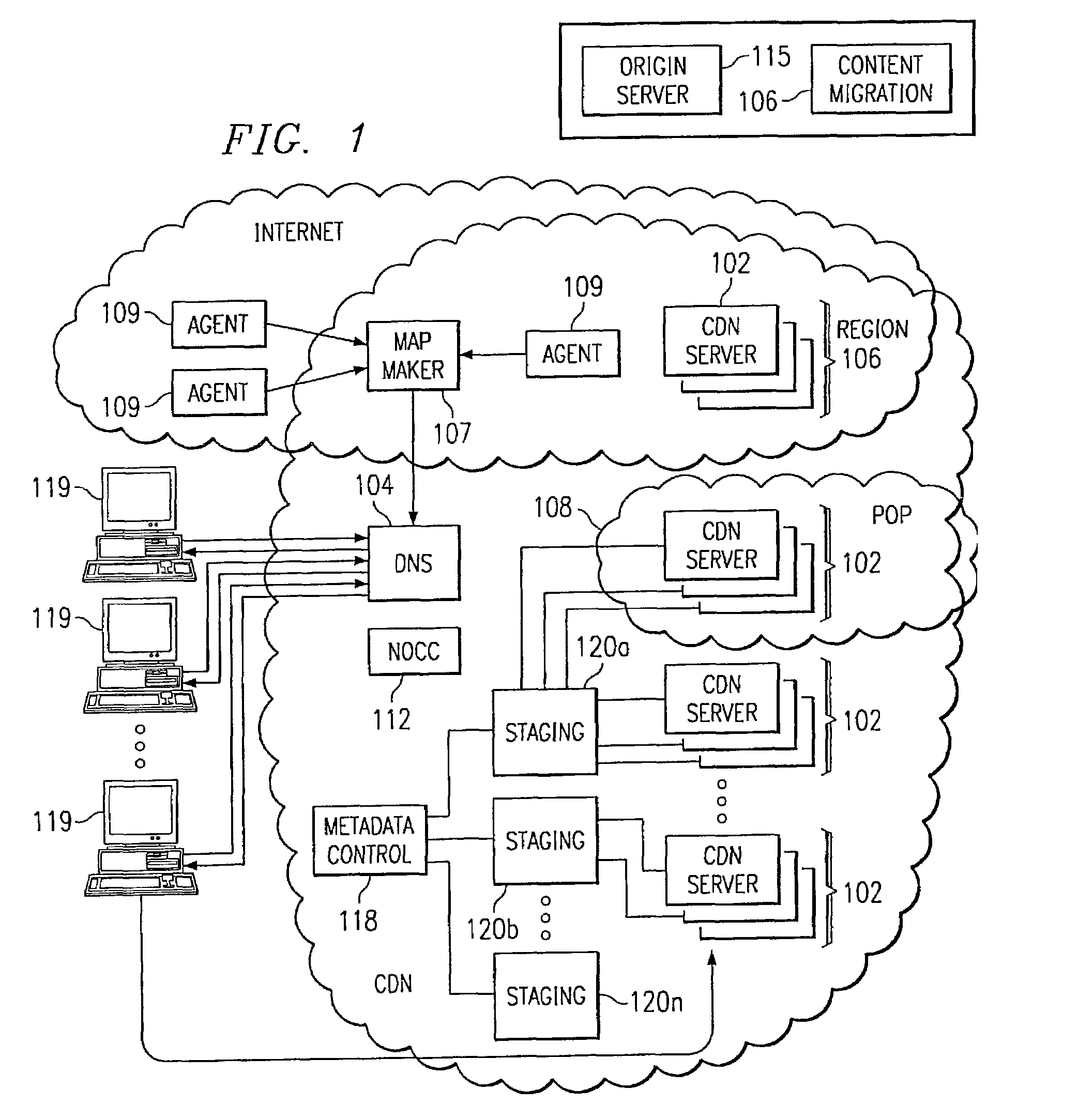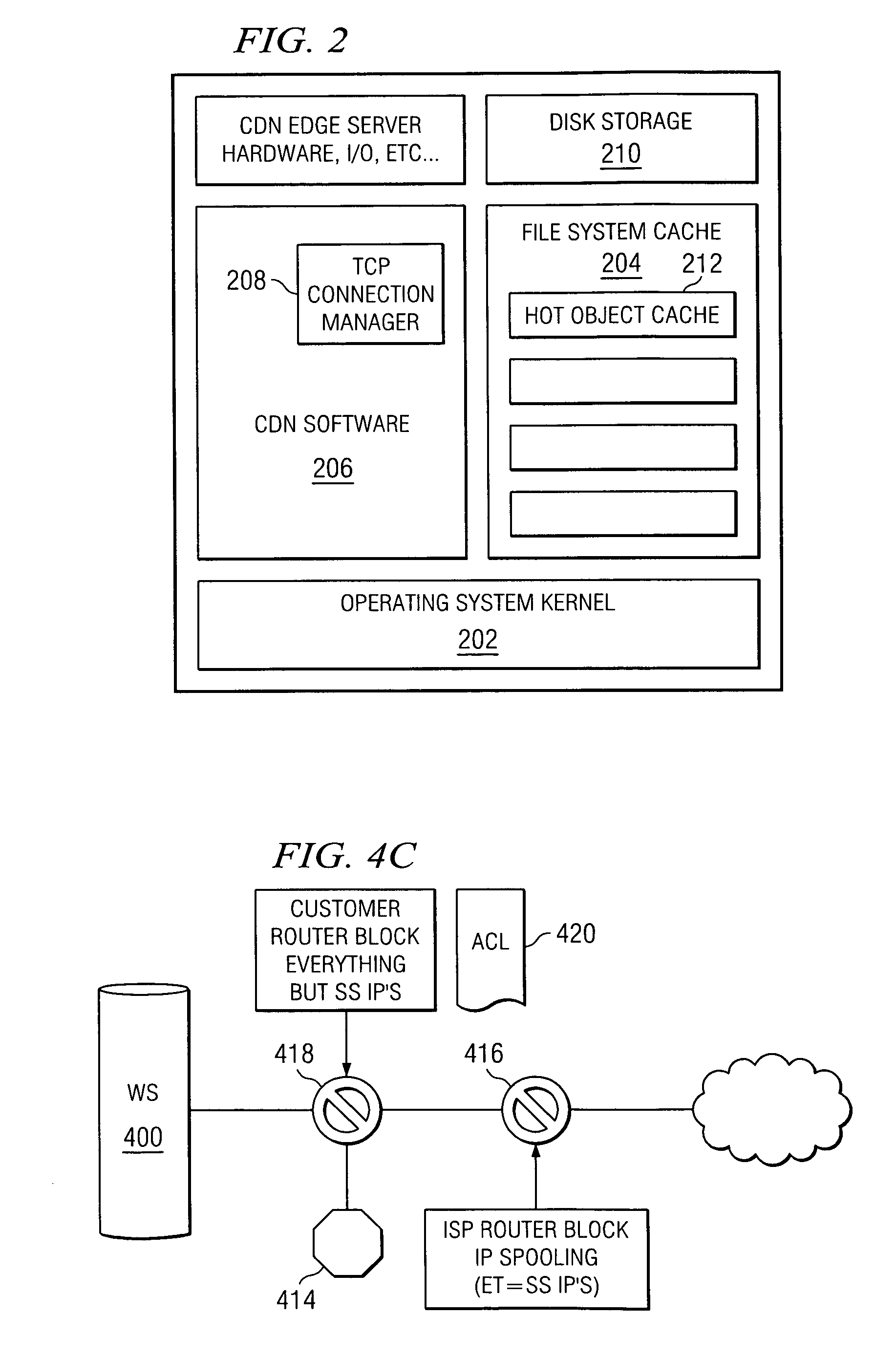Method and system for protecting web sites from public internet threats
a web site and public internet technology, applied in the field of methods and systems for protecting web sites from public internet threats, can solve the problems of delivering end users of protected sites unparalleled performance and reliability, and achieve the effect of fast and without fail
- Summary
- Abstract
- Description
- Claims
- Application Information
AI Technical Summary
Benefits of technology
Problems solved by technology
Method used
Image
Examples
Embodiment Construction
[0021]By way of background, it is known in the prior art to deliver digital content (e.g., HTTP content, streaming media and applications) using an Internet content delivery network (CDN). A CDN is a network of geographically-distributed content delivery nodes that are arranged for efficient delivery of content on behalf of third party content providers. Typically, a CDN is implemented as a combination of a content delivery infrastructure, a request-routing mechanism, and a distribution infrastructure. The content delivery infrastructure usually comprises a set of “surrogate” origin servers that are located at strategic locations (e.g., Internet network access points, Internet Points of Presence, and the like) for delivering content to requesting end users. The request-routing mechanism allocates servers in the content delivery infrastructure to requesting clients in a way that, for web content delivery, minimizes a given client's response time and, for streaming media delivery, pro...
PUM
 Login to View More
Login to View More Abstract
Description
Claims
Application Information
 Login to View More
Login to View More - R&D
- Intellectual Property
- Life Sciences
- Materials
- Tech Scout
- Unparalleled Data Quality
- Higher Quality Content
- 60% Fewer Hallucinations
Browse by: Latest US Patents, China's latest patents, Technical Efficacy Thesaurus, Application Domain, Technology Topic, Popular Technical Reports.
© 2025 PatSnap. All rights reserved.Legal|Privacy policy|Modern Slavery Act Transparency Statement|Sitemap|About US| Contact US: help@patsnap.com



